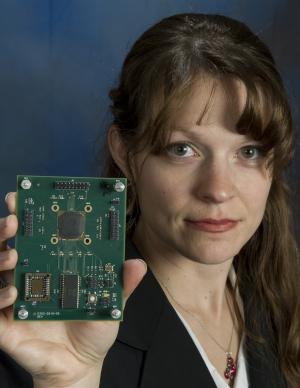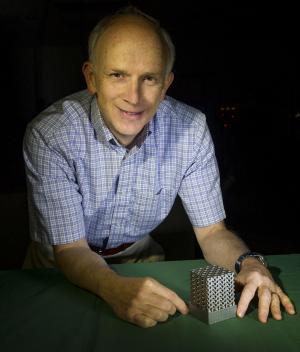You may hear about some of the more game changing developments occurring at NASA with regards to 3D printing, such as the SpiderFab project, the 3D-printed pizza, or the NIAC project for molecular bioprinting. But, while those applications may grab the most headlines, the space agency has been working with the technology on a regular basis to solve more ordinary – but still extraordinary – astronautic problems. The Internal Research and Development (IRAD) program at NASA’s Goddard Space Flight Center in Greenbelt, Maryland has spent the past two years applying 3D printing technology to a series of NASA-riffic projects. Chief Technologist at Goddard, Peter Hughes, explains,
We’re not looking to reinvent the wheel or pursue applications that industry already can do with 3-D manufacturing. We’re interested in finding out how this technology can enhance NASA’s ability to create one-of-a-kind instruments and components geared exclusively to studying and operating in space; in other words, improve what we already do well.
Among the different instruments and components in development is Jeffrey Didion’s electrohydrodynamic (EHD)-based thermal control device, now being used aboard the International Space Station. In order to control the heat of electronics in space, Didion has developed a method for pumping coolant through ducts inside of a thermal cold plate using electric fields. Heat is disposed of in a radiator, away from the circuitry of electronics systems, controlling their temperature. His method has fewer mechanical parts, uses less energy, takes up less room, and is lighter than the mechanical pumps previously used to regulate the temperature of electronics. While the device itself does not rely on 3D printing, Didion is looking into methods for 3D printing the EHD controller into the electronics themselves, saying, “What we’d like to do is look at integrating thermal management into a functioning electronics board. In theory, we could do a better job of packaging devices and reducing mass, power consumption, and volume.”

Our goal is to have all functions packaged into a component that could be plugged into a board or instrument. To help us get there, we plan to use additive manufacturing that could print conductors from chip to substrate. The future is looking to additive manufacturing techniques in electronics packaging. This opens up a lot of opportunities for miniaturized packaging, while decreasing the costs of spacecraft electronics.
Meanwhile, Jean-Marie Lauenstein is working on a project that may ultimately protect something like the MinE Pack from space radiation. Up until now, to protect electronics from radiation, components are often covered with a dense metal slab, a process known as “spot shielding”. With 3D printing, however, it may be possible to reduce the weight and size of these shields. Using direct metal laser sintering (DMLS), Lauenstein says, “We print shields tailored for specific package types for a hand-and-glove fit to minimize mass and area.” Her team will be testing these 3D-printed shields using environmental simulations of launch and orbit this year, explaining, “We hope this will become one more tool in the toolbox for mitigating radiation-dose effects.”

Because of this ability to print complex components into a single object, another technologist at Goddard, Jason Budinoff, is working with Stephenson to use metal sintering to print fully integrated telescopes as a proof-of-concept. By 3D printing the entire device as a single object, Budinoff believes that he can reduce the number of parts in the telescopes, thus reducing mass and cost. At the same time, the technique would increase the overall stability of the devices and reduce the costs and time required for assembling them.
Assistant Chief for technology for Goddard’s Mechanical Systems Division, Ted Swanson, reflects the beliefs of many who are coming to recognize the power of this technology, “My mission is to get the word out about this technology. We’re only limited by our imaginations as to how we can use this technology to make our instruments and components smaller, cheaper, and better. This is just the start. This technology is developing so fast, it’s hard even for us to stay on top of it.”
Source: Phys.Org


